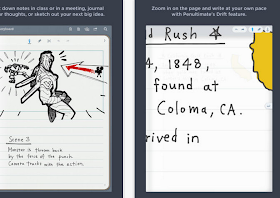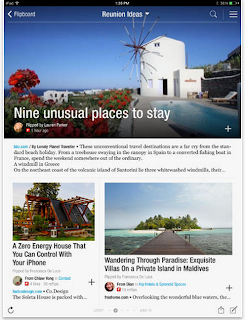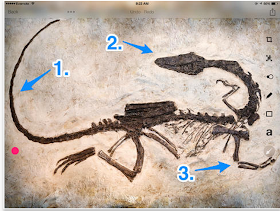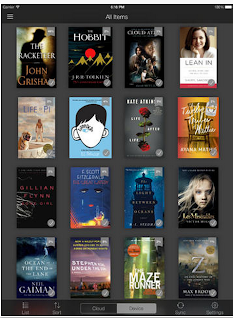January 2014 archive
D2L Known Issues Reminder:
We are entering spring semester 2014 with D2L version 10.1 SP13. This is a reminder of some of the known issues that we are still experiencing.
These are by no means the only known issues we are dealing with, but they are particularly troublesome at the beginning of the semester when instructors are copying courses forward and editing their quizzes.
1. Attempting to delete questions in a quiz or question collection produces an error and/or does not delete all of the questions selected for deletion.
Workaround is to attempt to delete only a few questions at a time.
2. Cannot change the number of questions to be drawn from a random question set.
No workaround. Only option is to create a new random set and enter the correct number of questions to draw from the set.
3. Some surveys and checklists that are copied forward into a new course become un-editable or cannot be deleted. Typically this will happen when there are start or end dates for the surveys and checklists and those dates are set to display on the calendar.
Workaround/Fix: This issue requires a manual database fix by our SSA team.
Submit a ticket, including Course OU#, name of survey or checklist (and name of checklist items). Also, go to the specific survey or checklist, copy the URL and include it in the ticket–this will provide the item ID so it can be located and fixed in the database.
Further questions and inquiries? Please address to:
d2L@stcloudstate.edu
Follow us on Twitter: @scsutechinstruc #d2l
1. Green room at cCETL
podcasts, live streaming
3 is the magic number, having 3 students
mavtube on kaltura as YouTube channel
how does it help faculty? hi end lecture capture. Collaboration for two experts, they can use the green screen. Use the background.
How decisions are made. Is faculty involved. This center is one time deal, money spent on production. Innovative technology for $40K. It might be more. No time to survey people what they want. There are other technologies which people can try out and then expand on them.
Bunch of smart boards, but not sure if people are. Using them. Software and apps only here at the CETL, not on the. Rest of the campus. People will try but get stuck with that technology Only.
staffing snow students.
#pm #techworkshop #LectureCApture http://ow.ly/i/4ex06 http://ow.ly/i/4ex0v
web page and linkedin are the social media they are using
the CETL is housing people with different bosses. Closes collaboration is technology and CETL, not research yet. D2l specialist and hardware people are coming to CETL. StarID conversion is hosted in CETL. Library had to give up spaceto CEyl and like at Scsu problematic.
Assessment certificate. Sustainability and budget.
Summer money for class redesign. Cohort of people who can focus on that. flipped classroom study abroad etc as themes.
New provost wants decisions to be data driven. Is there an office like institutional research. Use only quantitative data but thinking about qualitative interviews.
generation on a tightrope
http://www.amazon.com/Generation-Tightrope-Portrait-College-Student/dp/0470376295
working with the librarians took time also. make aware librarians of the lecture capture for instructional purposes.
Focus is student learning.
Curiculum maPiping speaker and CETL is asking how can follow up.
Stoodle is a web application which allows you, without any download or registration, to create a quick classroom space. By sharing the URL of the classroom you can invite other participants. You can use microphone or text based chat, and upload files (images) to discuss.
How BYOD Programs Can Fuel Inquiry Learning. Backchanneling.
http://blogs.kqed.org/mindshift/2014/01/how-byod-programs-can-fuel-inquiry-learning/
creating a learner profile, a set of criteria the school district wanted students to learn while in school. That profile includes: seek knowledge and understanding; think critically and solve problems; listen, communicate, and interact effectively; exhibit strong personal qualities; and engage and compete in a global environment. The profile helps guide all approaches to learning in the district.
Kids already know how to use their devices, but they don’t know how to learn with their devices,” Clark said in an edWeb webinar. It’s the teacher’s role to help them discover how to connect to content, one another and learning with a device that they may have only used for texting and Facebook previously. “It’s about the kids being empowered in the classroom to make decisions about the ways that they are learning,”
Four Smart Ways to Use Cell Phones in Class
http://blogs.kqed.org/mindshift/2012/11/four-smart-ways-to-use-cell-phones-in-class/
IN-CLASS POLLING/QUIZZING.
IN-CLASS BACK-CHANNELING: Backchanneling refers to the use of networks & social media to maintain an online, real-time conversation alongside spoken remarks.
IN-CLASS READINGS AND HANDOUTS. Smartphones can also be used productively in the classroom as eReaders for books and handouts. You can place all student handouts into DropBox folders (see “Dropbox A Multi-Tool for Educators”).
ORGANIZING RESEARCH.
Using Google Docs for backchanneling with students:
http://www.educatorstechnology.com/2014/04/this-is-how-to-use-google-docs-to.html
10 ways to employ backchanneling in classroom instruction.
- Poll students on a particular classroom event or on a decision regarding their learning
- Crowdsource feedback on learning activities and use this input to inform your future instructional strategies.
- Backchanneling empowers students voice and make them feel they are real participants in the knowledge building taking place in the class.
- Conduct informat assessments .
- Assess students prior knowledge about a given topic.
- Brainstorm ideas for a writing project.
- Encourage students to ask questions about anything they did not understand.
- Hold synchronous discussions of video content shared in class
- Organize real time discussions in class.
- Backchanneling is a good way to engage introverts and shy students in classroom conversations.
- Location-based integration.
- The domination of ebooks.
- Cloud computing in schools.
- Bring-your-own-device classrooms.
- Online collaborative learning.
- The rise of the tablet.
- Online class management.
- Social media for education.
- Snack learning.
- Mobile learning in workplace training.
http://blogs.kqed.org/mindshift/2011/07/10-major-mobile-learning-trends-to-watch-for/
Inforgraphics on female usage of social media
http://www.pinterest.com/pin/541909767633878298/
Spring Semester Start–D2L Performance
Our number one priority during spring semester start is system performance, which we will be monitoring closely. As always, we advise that faculty perform course copying and exporting/importing prior to the first week of classes. If any system wide performance issues occur, we may need to ask users to avoid certain activities during high usage periods.
If you or your users need to report slow performance issues, please gather all relevant information and include it in the ticket. It may be helpful to send this list of pertinent details to your faculty in advance, so they are aware of the information we need to replicate and diagnose issues to determine the source of the problem.
Please include this information when reporting D2L performance issues.
Name of person experiencing issue:
Date and time of issue:
Role: (student, teacher, admin)
Course: course OU#
Tool: (Discussion, Grades, etc.)
Steps Taken: (details so we can replicate, i.e., open discussion topic #2, click Post, get error, etc.)
Problem that occurs: (30 second wait, error, etc.)
Device: (Mac laptop, Windows desktop computer, iPad tablet, Android phone)
Operating system: (Windows 7, Mac OS 10.6, etc.)
Location: (Home, Campus, Public)
Hardwired or wireless:
Browser and version:
How many browser sessions and tabs were open?
How many other applications were open? (Word, Excel, etc.)
Any attempt to use a different browser, and if so, were the results the same?
Any attempt to try from a different computer, different location and/or different connection type, and if so, were the results the same?
Any attempt to close extra browser tabs, sessions and/or other applications that were running, and if so, were the results the same?
Thank you in advance for your attention to detail when reporting D2L issues.
Further questions and inquiries? Please address to:
d2L@stcloudstate.edu
Follow us on Twitter: @scsutechinstruc #d2l
Follow the IMS blog: https://blog.stcloudstate.edu/ims
nSpire: iPAD app for math: evaluation
http://www.media4mathplus.com/Assets.aspx?search=nspire%20app
per LinkedIn discussion: http://www.linkedin.com/groupAnswers?viewQuestionAndAnswers=&discussionID=5822757351727316994&gid=2038260&goback=%2Enmp_*1_*1_*1_*1_*1_*1_*1_*1_*1_*1#commentID_null
What is the difference between education and training?
Don Fitchett☆☆☆☆☆ Industrial Automation Training – Industrial Training software to Maintenance, Engineering, Manufacturing.Top Contributor
Schools and companies commonly use the word “Training” when actually all they are delivering is scholastic education. Our company clearly distinguishes between the two which increases our effectiveness and to differentiate what we deliver to customers (what most call students) from others like colleges. I thought it would be interesting to get this group’s members opinion on the difference between “Training” and “Education”, and to get group members thinking about it.
 ray schroeder
ray schroeder
10 Fundamental Apps for Your New iPad
http://www.educatorstechnology.com/2014/01/10-fundamental-apps-for-your-new-ipad.html?m=1
1- Dropbox
Besides Google Drive App, Dropbox is a great cloud storage platform that you can use for free. When you sign up you get 2GB of space for free and you can upgrade for more. Dropbox lets you save all your pictures, files, and documents into easily arranged folders and access them anywhere you are with internet connection and across different devices. its syncing capabilities are also great.
2- Evernote
This list would not be complete without Evernote. This app is definitely a must have. It allows you to take notes on the go and sync them across different devices and platforms. Evernote is also a wonderful bookmarking tool that you can use to save and curate web content.
3- Gmail
This is the official Gmail app for iPad. The new update brought to Gmail app some new useful functionalities including: multiple account support, real time notification, and search across the entire inbox.
4- Penultimate
This is a wonderful app for digital handwriting. It allows you to handwrite on your iPad, take notes, write on pictures, zoom in on a spot and illustrate it. When you are done you can store your note into your Evernote account and access it from anywhere with internet connection.
5- Paper
Wanna unleash your creativity on iPad, give Paper a try. This is an app that enables you to create drawings, illustrations, notes, sketches, diagrams and share them with your students and colleagues.
6- Chrome
Chrome is my favourite browser for iPad. Safari is also a good option but I like Chrome the most because I find it to be fast, loads quicker and is user friendly.
7- Flipboard
Flipboard is a great personal magazine. You can use it to catch up on the news you care abut. You can add popular publications like New York Times or add the feeds of your favourite websites and blogs. Flipboard also enables you to stay updated about the news and feeds coming from your social media networks like Facebook, Twitter, Thumblr, and Instagram and all in a beautiful magazine style experience.
8- Skitch
This is the app I use to illustrate pictures I take with my iPad camera. Skitch allows you to capture a picture or use the ones you have in your camera roll and write or draw on them before sharing them with others.
9- Twitter
This is the official iPad app for Twitter. It is pretty basic because it’s free but if you want a sophisticated Twitter app then go for Tweetbot ($2,99). I personally use the free one.
10- Kindle












